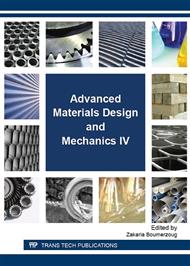p.89
p.96
p.101
p.108
p.117
p.122
p.127
p.132
p.137
Effect of Groove Geometry on Rolling Contact Fatigue of PEEK Thrust Bearings in Water
Abstract:
Bearings have been used in various environments. Recently, small and light-weight bearings are developed in order to downsize mechanical components. Polymer bearings, such as PEEK (Poly-Ether-Ether-Ketone), PTFE (Poly-Tetra Fluoro-Ethylene) and PPS (Poly-Phenylene-Sulfide-Resin), are designed because of advantages of light weight, high corrosion resistance and self-lubricating. However, industrial design standards of these bearings have not been established yet, i.e., the relation between working conditions, shape, geometry, and lives of bearing components under RCF (Rolling Contact Fatigue) is not fully understood as well as crack propagation, wear and/or failure. In this study, we focused on the manufacture process of groove curvature decreasing contact stress, and observed cracks and flaking failures on groove surfaces and cross sections. Based on these observations, we investigated the relation between the groove geometry and lives of all-PEEK thrust bearings in water.
Info:
Periodical:
Pages:
117-121
Citation:
Online since:
November 2016
Price:
Сopyright:
© 2017 Trans Tech Publications Ltd. All Rights Reserved
Share:
Citation:


